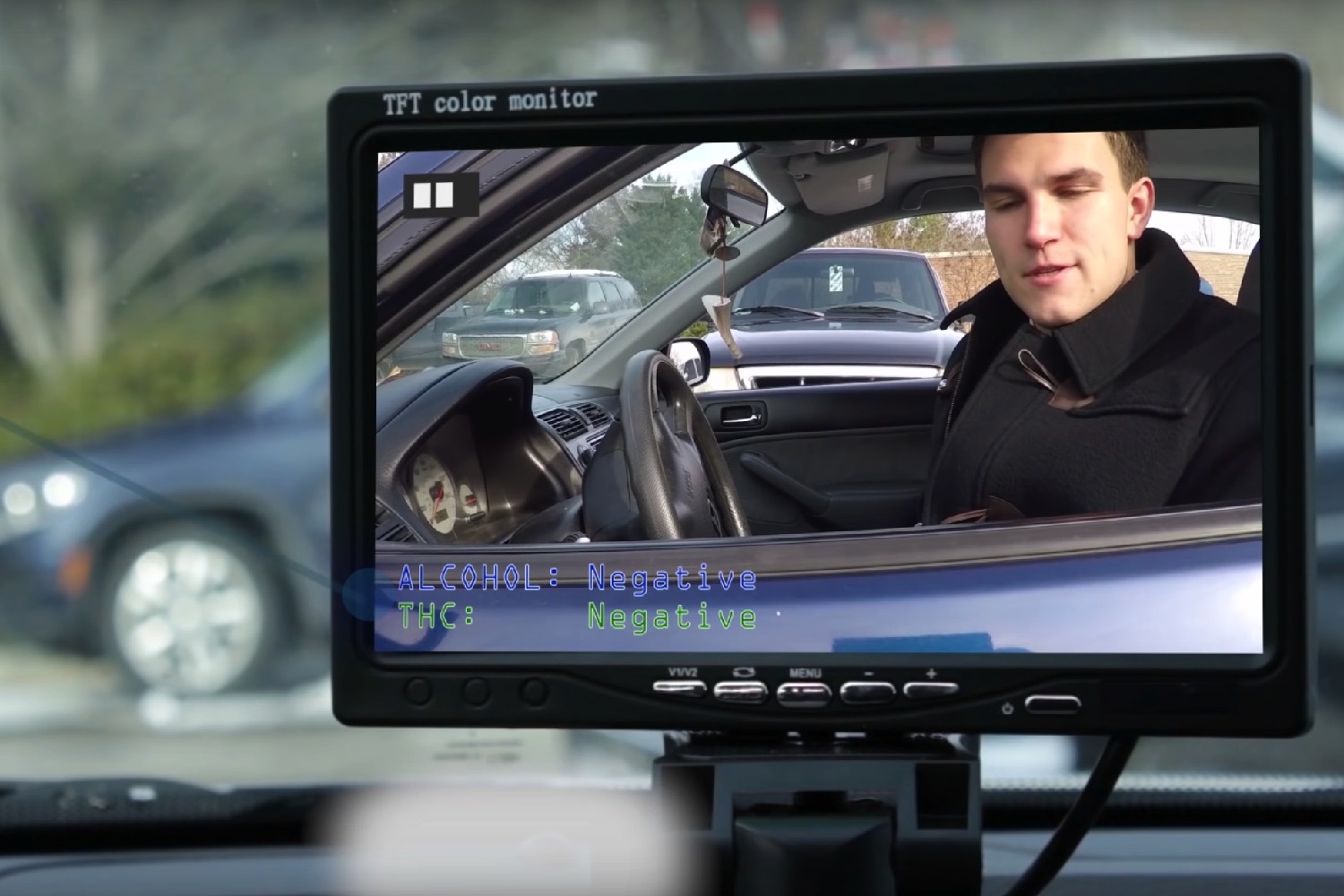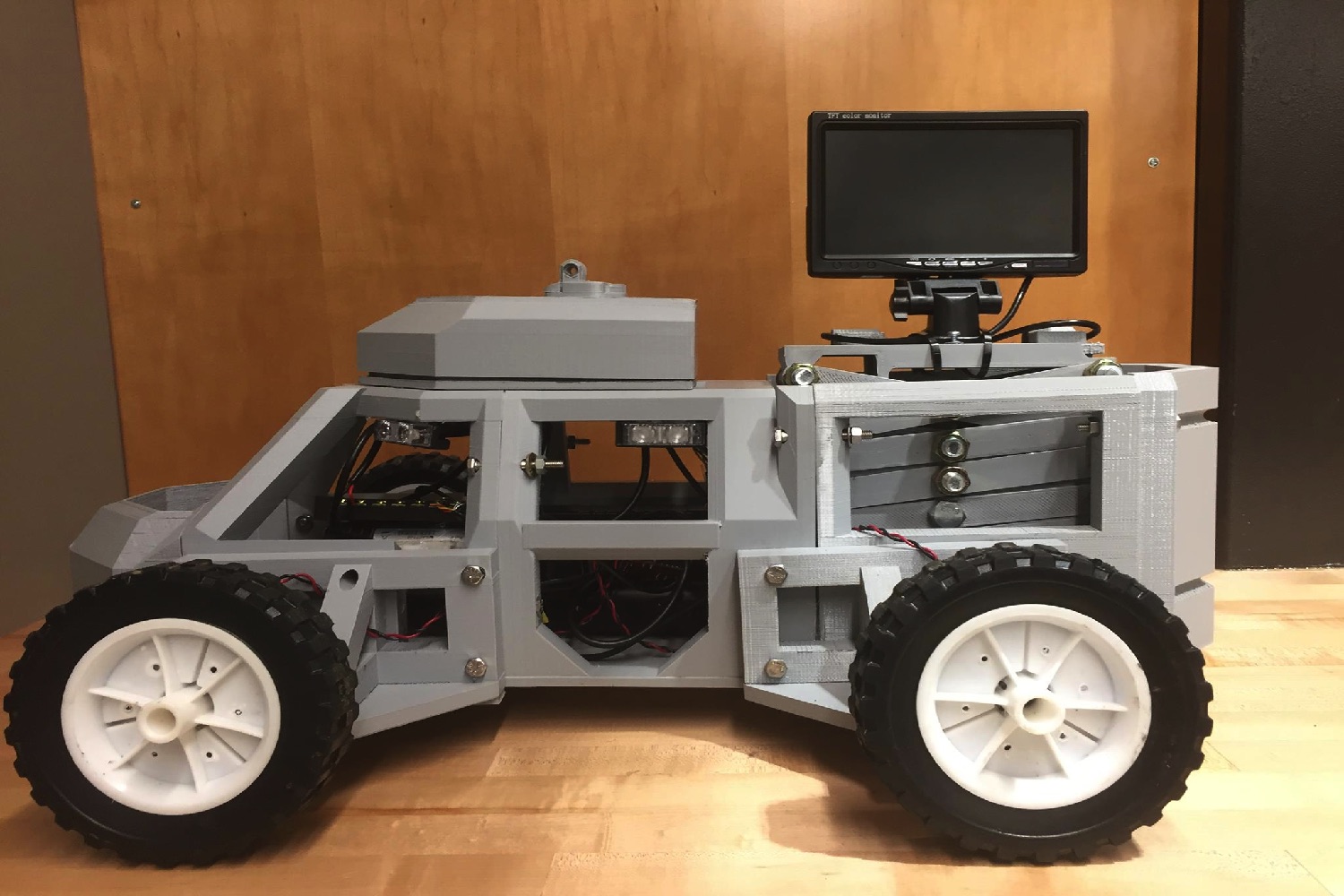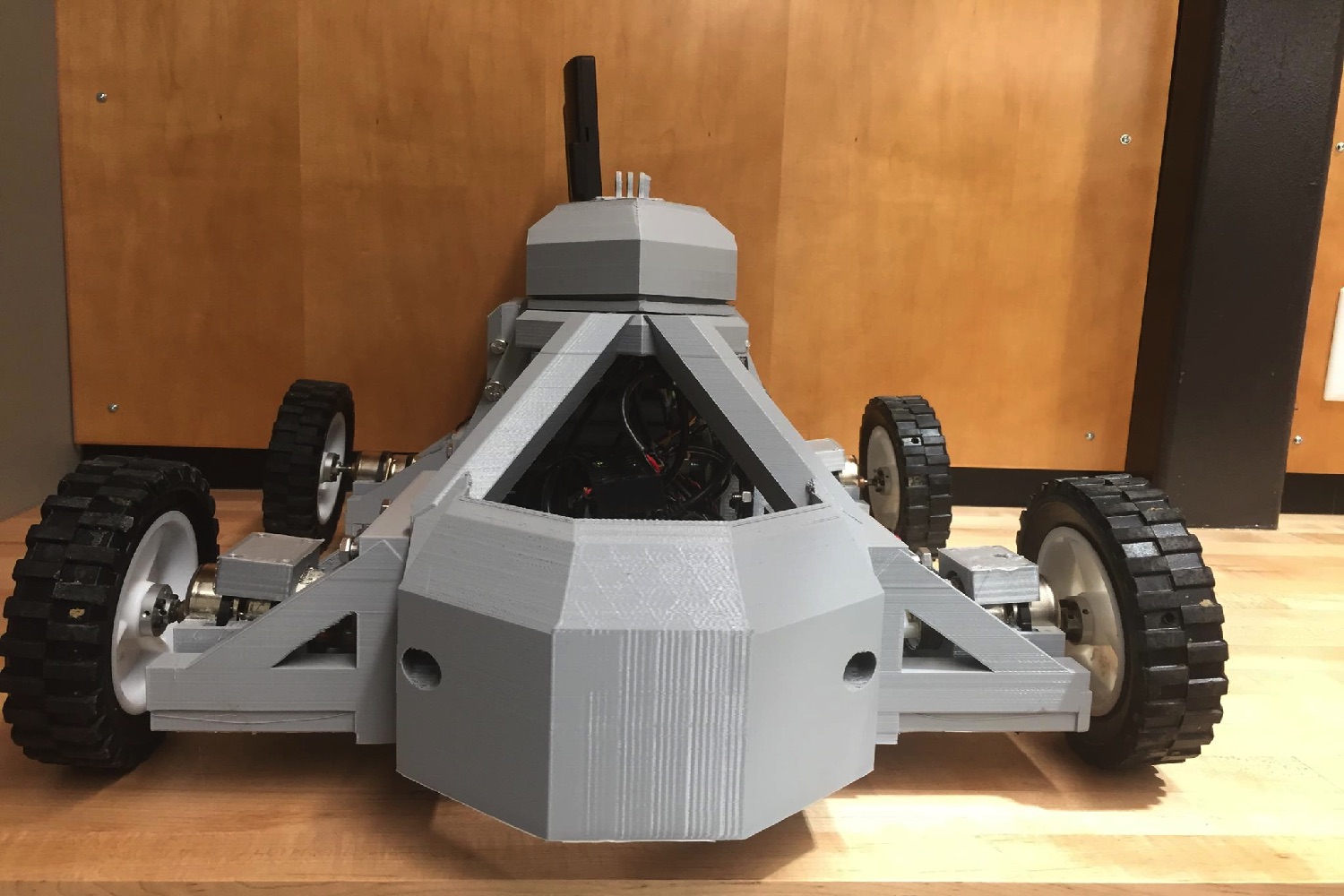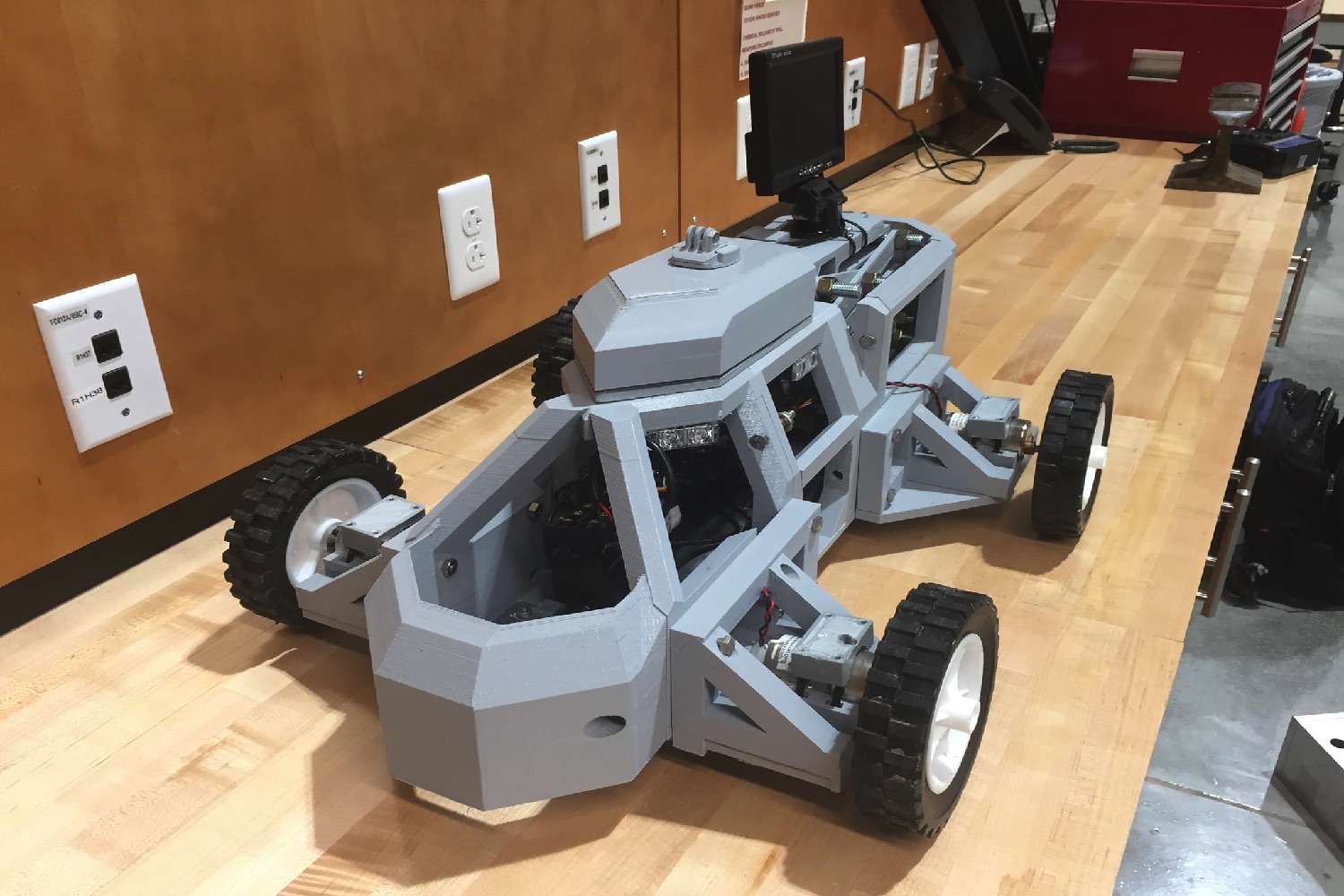“In July last year, there were two specific instances that really pushed us to develop this device,” Vaibhav Tadepalli, a researcher at Duke University, told Digital Trends. “On July 6, Philando Castile was shot during a traffic stop in front of his girlfriend and four-year-old daughter. Then, two days later, officer Michael Flamion was shot as he approached a vehicle during another traffic stop.”
What Tadepalli and Sentinel co-founder Chris Reyes, along with three others, set out to develop was a robot that could law enforcement with this sometimes dangerous task.
The idea is simple: An officer involved in a traffic stop presses a button on the central console of his or her vehicle. This deploys the Sentinel robot, which autonomously approaches the stopped car. It then raises a video display that serves as a two-way link between the officer and the driver of said traffic stop vehicle.
The officer can request that the driver holds up their license and ID, and then scan this from the safety of their own vehicle. The robot can also perform breathalyzer and THC tests. If the officer deems the driver to be safe, they can exit their vehicle and proceed as normal.
If it turns out that the person pulled over has previous violent convictions, or a warrant out for their arrest, they can make an informed decision without putting themselves into harm’s way.
“Everything we looked at that tried to solve a similar problem focused on recording what happens,” Tadepalli continued. “For example, there’s been a lot of work put into body cams. Then there’s another company called Blue Eyes, which deploys drones to provide an elevated view of what’s happening. But there was nothing we could find that would keep officers out of danger. In every scenario, officers still needed to exit their cars and walk up to the window of the car they had pulled over.”
At present, the team behind the Sentinel Robotic System is raising the money to further develop the idea. If you’re interested in supporting it, can do so by pledging on Indiegogo, where contributing to the $7,500 goal can gain you a project sticker, T-shirt, scale model of Sentinel, or even the ability to name one of the bots.
Editors' Recommendations
- Police robots put on permanent patrol at Singapore airport
- The iRobot Genius 4.0 update makes Roombas even smarter
- Robots could soon make up a quarter of U.K. army, top general suggests
- Smoothie-making bot at Walmart signals the rise of the robot fast-food worker
- Robotic rubdown: New robo-masseuse could make its way into your home







